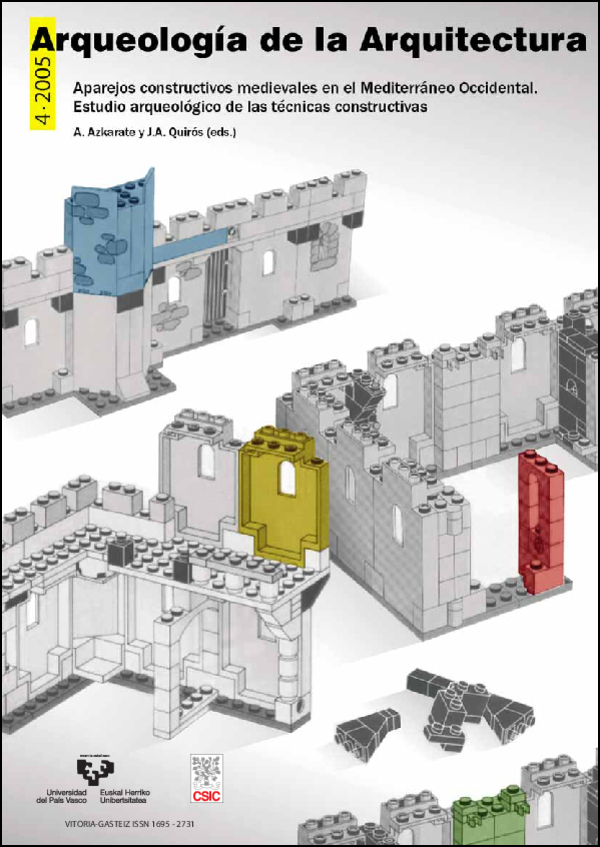Las técnicas constructivas en la formación de Al-Andalus
DOI:
https://doi.org/10.3989/arq.arqt.2005.80Keywords:
Al-Andalus, arranged masonry, tapial, High Middle AgesAbstract
The study of the constructive techniques in the formation of Al-Andalus is framed inside the debate about the transition from the late antiquity to the high Middle Ages and from the analysis of the processes that participate in the architectural production. Along the VIII and IX centuries, it is observed the difficulties in the recovery and standardization of the architectural demand where the projects of buildings in arranged masonry cohabit with the ones built in «tapial» (walls of compressed mud). This duality in the constructive techniques is an example of the slow and difficult the Islam formation progress of the peninsula that culminated in the X century with the Umayyad caliphate of Cordoba and that it supposed the development of a real constructive programme of Al-Andalus.
Downloads
Downloads
Published
How to Cite
Issue
Section
License
Copyright (c) 2005 Consejo Superior de Investigaciones Científicas (CSIC) - Universidad del País Vasco/Euskal Herriko Unibertsitatea (UPV/EHU)

This work is licensed under a Creative Commons Attribution 4.0 International License.
© CSIC. © UPV/EHU. Manuscripts published in both the print and online versions of this journal are the property of Consejo Superior de Investigaciones Científicas and Universidad del País Vasco/Euskal Herriko Unibertsitatea, and quoting this source is a requirement for any partial or full reproduction.
All contents of this electronic edition, except where otherwise noted, are distributed under a Creative Commons Attribution 4.0 International (CC BY 4.0) licence. You may read the basic information and the legal text of the licence. The indication of the CC BY 4.0 licence must be expressly stated in this way when necessary.
Self-archiving in repositories, personal webpages or similar, of any version other than the final version of the work produced by the publisher, is not allowed.















